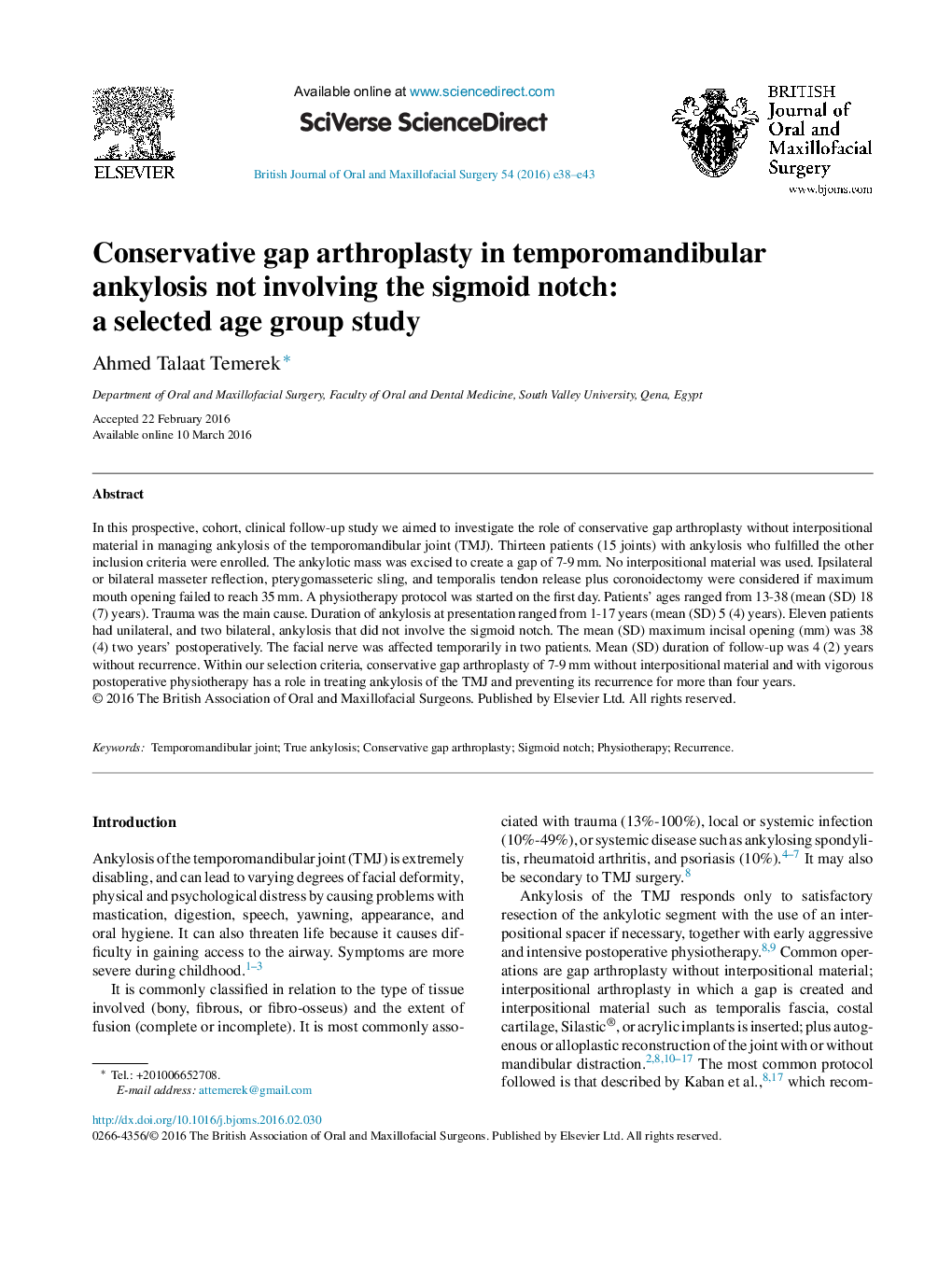| Article ID | Journal | Published Year | Pages | File Type |
|---|---|---|---|---|
| 3122807 | British Journal of Oral and Maxillofacial Surgery | 2016 | 6 Pages |
In this prospective, cohort, clinical follow-up study we aimed to investigate the role of conservative gap arthroplasty without interpositional material in managing ankylosis of the temporomandibular joint (TMJ). Thirteen patients (15 joints) with ankylosis who fulfilled the other inclusion criteria were enrolled. The ankylotic mass was excised to create a gap of 7-9 mm. No interpositional material was used. Ipsilateral or bilateral masseter reflection, pterygomasseteric sling, and temporalis tendon release plus coronoidectomy were considered if maximum mouth opening failed to reach 35 mm. A physiotherapy protocol was started on the first day. Patients’ ages ranged from 13-38 (mean (SD) 18 (7) years). Trauma was the main cause. Duration of ankylosis at presentation ranged from 1-17 years (mean (SD) 5 (4) years). Eleven patients had unilateral, and two bilateral, ankylosis that did not involve the sigmoid notch. The mean (SD) maximum incisal opening (mm) was 38 (4) two years’ postoperatively. The facial nerve was affected temporarily in two patients. Mean (SD) duration of follow-up was 4 (2) years without recurrence. Within our selection criteria, conservative gap arthroplasty of 7-9 mm without interpositional material and with vigorous postoperative physiotherapy has a role in treating ankylosis of the TMJ and preventing its recurrence for more than four years.
